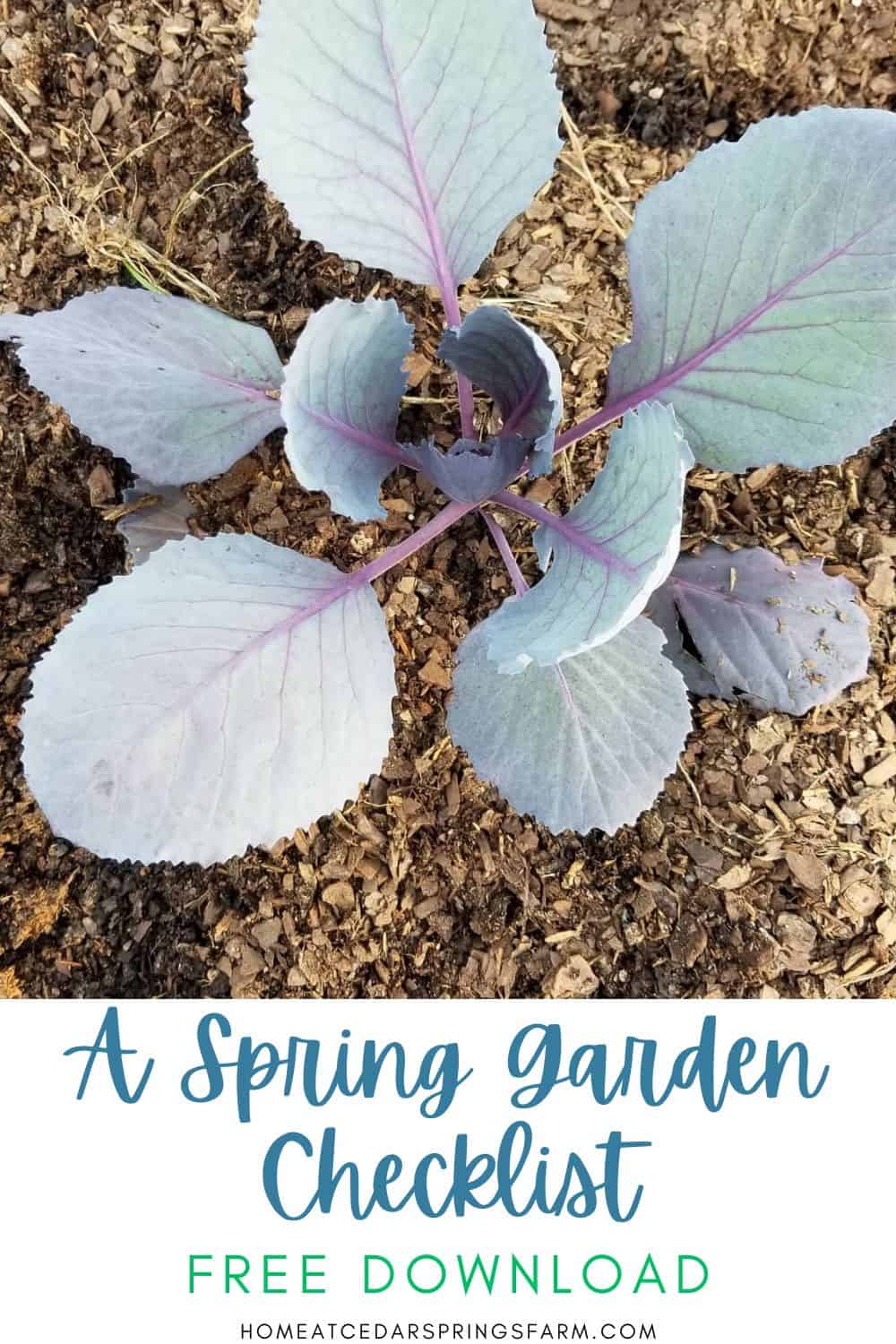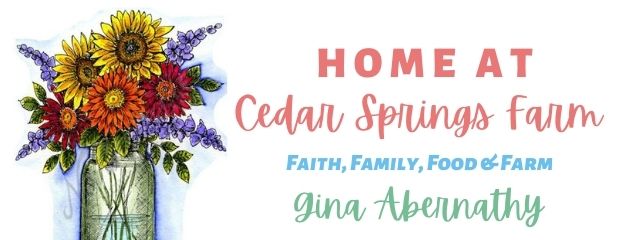Spring Garden Checklist and Tips
As the days grow longer and the temperature begins to rise, gardeners everywhere eagerly anticipate the arrival of early spring, renewal, and growth. This is the time of year when the earth awakens from its winter slumber and bursts forth with its new growth, color, fragrance, and life. For those with a passion for gardening, spring is a time of excitement and possibility waiting to be transformed into blooms, foliage, and delicious harvests.
To make the most of this season, it’s essential to have a plan in place—a guide to walk you through the process of preparing your garden beds from spring into summer. That’s where this spring garden checklist and tips help with those spring garden tasks. Whether you’re a seasoned or a beginner gardener just starting out, this simple 12 step checklist will help you create the perfect spring and summer garden, ensuring a season of beauty, abundance, and joy. So grab your gloves, and let’s dive in!

As late winter gives way to the promise of warmer weather, gardeners anticipate the arrival of spring planting season. With the last frost date on the horizon, it’s the best time to start preparing outdoor spaces for the long-awaited burst of new growth. As the days grow longer and the temperatures begin to rise, it’s essential to not only assess your garden area but also assess fruit trees for any dead branches leftover from the long winter months. Pruning away dead wood improves the trees’ health and appearance and promotes new growth in the coming season.
Why I Should Plant A Backyard Garden
Planting a backyard garden offers many benefits that extend beyond just having access to fresh produce. Whether you’re motivated by the spring season, the warm weather, health, cost savings, or a desire to live more sustainably, gardening is a rewarding and fulfilling pursuit that can enrich your life in countless ways. Here are reasons why you should consider planting a backyard garden:
Access to Fresh Produce – One of the most important obvious benefits of growing a backyard vegetable garden is growing fresh produce, fruits, and herbs. Homegrown produce is fresher and tastier and can be harvested at peak times.
Cost Saving – Growing a garden can save you money in the long run. While there will be some start-up costs for buying the seeds, plants, and dirt, the amount is small compared to the amount of vegetables you can harvest.
Food Security – Having a backyard garden can provide a sense of security in these uncertain times by ensuring a supply of fresh produce.
Connection to Nature – Having a garden allows you to connect with nature by tending to the new plants, weeding, and nurturing them through the season.
Check out this post on How to Plan a Garden for Beginners.
Plan Your Garden
Plan Your Garden-This is the perfect time to decide what you are going to plant and where the location of your garden will be. Also, decide how big or small you want your garden this year. Remember, you can start small this year and make it bigger next year. Before you break ground, take some time to plan your garden layout. Consider the amount of sunlight, soil quality, and space availability. Sketch out a design of where you want to plant each vegetable or where your flower beds will be.
Choose A Location
Choosing the Right Location –This is super important. A good location for your garden is a key element. Most plants require at least 6 hours of sunlight to survive. Find a garden area that gets good sunlight and has well-draining soil. Avoid areas that are prone to flooding.

Till The Soil
Till the Soil–Till the garden soil and prepare the dirt for planting. Rake away any garden debris and till in any cover crop that was used to enrich the soil or suppress the weeds. Potting soil, compost, and manure will add good nutrients to the soil. Some gardeners choose to have their soil tested to gain information on what their soil is lacking. There are soil testing kits at your local feed and seed store. You might also find these online as well. Use a garden tiller or shovel to loosen the soil. This will help when planting the seeds and small plants.
Mark Off The Rows In Your Garden Area
Marking Off The Rows -Now is a good time to mark off the rows in your garden. This will give you a good idea of what you have room to plant. You may also take note of how many plants you will need so you don’t overbuy in seeds and plants. Also, think about how you will arrange your plants. Will you plant in rows? Will you stagger your plants? Will you plant in raised beds? Take all of these things into consideration before planting your garden. This will also keep your garden organized and visually appealing.
In the garden beds, it’s time to clear away the winter debris and dead leaves to make way for new plants.
Choose Your Seeds and Plants For Your Garden
Think about the produce your family eats. Plant those vegetables this year. There is no need to plant vegetables you don’t eat. Also, if your family likes to eat squash 4 times a week and green beans once a month, plant more squash. Think about your garden plants and seeds before you go to the store. This will also keep you from overbuying. Choose varieties that are well suited to your growing conditions. You may also start your garden with young plants. I prefer to buy tomato, cabbage, and broccoli plants. Look for healthy, disease-free plants at local garden centers or feed and seed stores. If you are starting from seeds, be sure to read the seed packets for details on each vegetable variety.
Once you have your garden area prepared and ready, you are ready to plant! Read your seed packet for the planting depth and spacing.

Let’s plant!
Planting Your Seeds and Plants
With your garden soil freshly prepared, it’s time to get your seeds and plants in the ground. Follow the instructions on your seed packets or plant tags to ensure you are planting at the proper depth and correct spacing. Take care to water them thoroughly, providing them with the moisture needed for thriving roots.
Check out this post on The Easiest Vegetables to Grow In Your Garden. Think about the vegetables you and your family will eat and plant accordingly.
Water
Water your seeds and plants. Choose a location that has access to a water source. Watering your plants is not an option and will need to be done for the gardening season. Plants will need to be watered, especially if it does not rain often. Look for a place that is close to a water faucet or some type of watering source.
Now, we nurture, water, and wait for our seeds and plants to grow. While waiting, there are several other items that need attending from now until the rest of the growing season.
Thinning Plants
As your seeds, small plants, or seedlings begin to grow, you may need to thin them out to prevent overcrowding. Thin plants carefully remove the weakest or smallest seedlings, leaving behind the strongest ones with plenty of space to grow. Even garden beds or container-grown plants would need thinning if they were started with seeds.
Weeding Your Garden
Weeds can quickly take over a garden if left unchecked. They are competing with your plants for water, nutrients, and sunlight. Inspect your garden regularly for weeds and remove them by hand or with a hoe, being careful not to disturb your plants.
Insects
Dealing with insects can be a common problem in the garden and outdoor space. Check for insects. Insects like tasty plants, too. Check for insects and get rid of them. There are insecticides available. Also, some homemade nontoxic options will work as well. **Tip–Diatomaceous Earth is a nontoxic way to control insects in the garden.
Apply Fertilizer
Apply fertilizer if needed. Check your soil sample and see if any additional soil amendments are needed in the garden area. It’s important to provide them with the nutrients they need. Consider using an organic fertilizer such as compost, manure, or fish emulsion, and apply them according to the instructions on the package.
Harvest
This is the best part of having a garden and seeing the best results from your hard work. Harvesting your vegetables is your reward for working hard in your garden. Monitor your plants regularly for signs of ripeness, such as color, size, and texture. Now is the time to enjoy all of those fresh vegetables. You may decide to can or preserve them to enjoy later.
Starting and maintaining a garden takes some planning and a lot of work. You can do it! Start small if you are new to gardening, and work up to a bigger garden the next year. By following this 12-step checklist, you’ll be well on your way to a successful spring garden filled with vibrant, healthy plants and delicious harvests. So roll up your sleeves, dig in the dirt, and enjoy the process of nurturing your garden from seed to harvest. Happy Spring and gardening!
Follow this Spring Garden Checklist and Tips to help you plan, produce, and have the best garden this year.
Subscribe to my e-mail and receive your FREE printable Garden Checklist and a 5-page Gardening Journal to help you plan and keep track of your garden this year.
Some Flower Gardening Tips
If you are planting flowers, take advantage of the cooler weather to divide perennials and plant cool-season annuals, Buy some spring bulbs and annual flowers, which thrive in the mild temperatures of early spring.
Start a compost pile and work this into your garden next year.
Apply fresh mulch around the flowers to retain the moisture and suppress the weeds.









I love how you broke this down into such simple steps! Perfect for beginners (:
Love this checklist! I was thinking of growing my own garden soon during this lockdown.
Now I need a garden! Love this – thanks 🙂
I should definitely go back to this post once I have my own small land where I can start a garden or small farm. Well written and easy to understand. 🙂 Bookmarking!
Great garden tips! I love planting a vegetable garden each year. In addition to insects, I have to protect our garden from slugs, deer and bunnies. I use a lot of netting to protect the plant starts. Thanks so much for sharing your tips for planting a garden.
I love your perfect garden checklist! I am not so good at gardening, but your list makes it look simple and manageable. Thanks for sharing!
This is great! I’ve always wanted to start a garden but have never successfully done so. I think this perfect garden checklist is step 1 for what I need to do! Thanks for sharing!!
We’re not the best gardeners ever, so this post is really useful! I feel like we definitely don’t till the soil properly, so I’ll focus on that this season. Thank you!
Good garden checklist. I’m heading outside right now to do a few of them. Pull weeds and kill insects especially tomato worms.
These are excellent tips. Thanks for sharing.
You make it seem super easy. My biggest issue in the garden is pest control. Growing organically means much less bug control but I’ll take it.
This perfect garden checklist is great for ensuring your garden goes through all of the necessary steps from prepping, to planting and then to harvest. I think this is especially helpful for those who are newer to gardening and may miss an important step along the way.